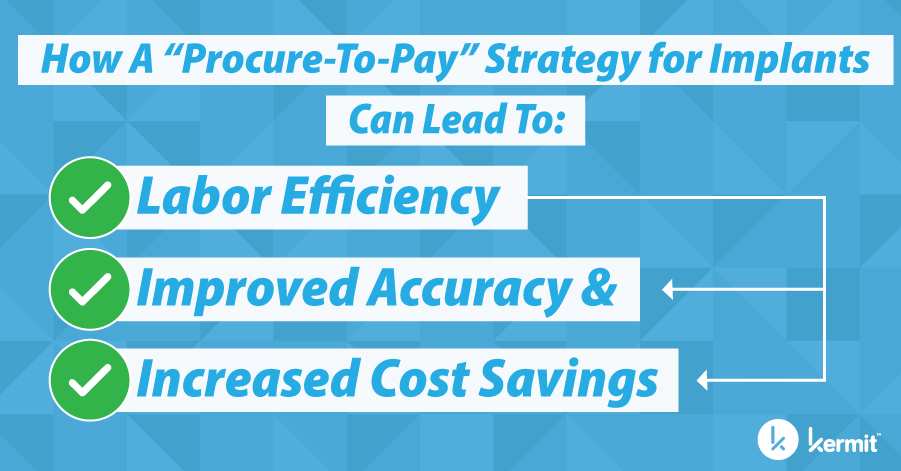Like many industries in the U.S. today, hospitals and health systems are being challenged by an unprecedented shortage in qualified labor. These labor shortages are felt across many departments and functions-- from nursing and other frontline clinical positions to administrative areas such as supply chain operations. As hospitals have struggled to fill critical open positions, the impacts are being felt across the organization.
This industry-wide labor crunch has impacted hospital finances in no small way. According to Kaufman Hall’s February 2022 National Hospital Flash Report, the median change in operating margin was down 71.3% from December to January. This is due, in large part, to a dramatic increase in labor expenses. According to the report, Labor Expense per Adjusted Discharge increased 57% compared to pre-pandemic levels of January 2020.
When combined with the economic impact of the prolonged pandemic as well as various supply chain disruptions, hospitals stand in a precarious economic position that appears to be around for the foreseeable future.
How A “Procure-to-Pay” Technology Solution Can Lessen the Burden
In a recent study published in Becker’s Hospital Review that focused on the nursing shortage, manual tasks were identified as “a critical source of nurses’ frustration.”
“The operational flaws and staffing coordination issues that have been building up over time have reached a breaking point due [to] the stresses of Covid. However, it’s not too late for hospitals and health systems to remedy this dire situation and solve the systemic operational issues that are plaguing nurses and leading to mass burnout, fatigue, and turnover,” the report states.
Just like for nurses, manual tasks are also a source of frustration for many across the healthcare workforce, including supply chain and purchasing.
One glaring example of an inefficient and manual process that is roundly frustrating for all involved: the implant bill-only process. With this process, manual tasks are required at nearly every step of the process: scheduling the case with implant vendors, managing items brought into the O.R., accounting for which devices were used and ensuring that the vendor payment is accurate are all manual processes in most U.S. hospitals. Reviewing and approving the paper implant bill sheets, entering the items into the EHR, and submitting the invoice for payment round out the workflow and are also manual processes, each involving multiple resources and adding hours of work to our perioperative administrators.
With minimal planning and investment, hospitals can streamline the bill-only process, reduce paperwork and handoffs, and eliminate frustrating manual tasks while increasing efficiency, accuracy and capturing important data that is often locked away on paper invoices. Surgeons, nurses, perioperative teams, supply chain staff and even your vendor representatives will benefit from a minimal amount of investment in upgrading this process.
At Kermit, we’ve been focused on the bill-sheet issue for ten years. Our cloud-based solution provides a simple but effective way to digitize bill sheets (using a secure smartphone app) and automate the reconciliation and payment process. Taking it one step further, Kermit can co-exist within your current technology environment, automating everything from schedule and tray management to purchase order and invoice reconciliation process. Vendors are happy to comply since they receive purchase orders in a matter of days, not weeks.
Ask yourself: If everything from surgical scheduling to bill-only auditing and purchase order issuance was automated, how much time can be saved, and resources reallocated?
Find Implant Cost Savings to Off-Set Labor Shortages
Not only does implementing technology and AI into the bill-only process save time and allow for hours to be reallocated to other tasks, but it also increases accuracy and produces measurable savings.
After implementing this process at numerous hospitals, Kermit has found that automating the auditing and processing of paper bill sheets results in an average savings of 5-10% of total implant spend.
The savings come from Kermit’s ability to curb waste, abuse, and honest mistakes that are perpetuated by the paper bill sheet. Take for example these four cases audited by Kermit that resulted in more than $40,000 in savings. Bill sheets just like those are processed at your hospital every day, many going through without these needed corrections.
As the COVID impact on operational margins continues and increases in labor cost exacerbate the issue, reducing your implant spend by 5-10% can be a much-needed financial win for your institution.
The Procure-to-Pay Vision for Implant Spend Management
While true procure-to-pay solutions have been achieved in other spend departments within healthcare, allowing for better cost management and utilization tracking, implants have been one area where unique sets of challenges have historically prevented this approach from being fully implemented, primarily due to the non-inventory nature of implantable medical devices.
Since most implants are not inventoried items but instead “trunk stock” carried in by the manufacturer vendor representative shortly before the surgery, this makes the category much different than most others within healthcare supply chain. In addition, physician preferences for manufacturers and devices multiply the types of products that enter operating rooms, creating an overly complex web of challenges.
Kermit’s goal is to tackle these challenges head-on and develop an end-to-end, procure-to-pay solution for implants that streamlines operations for healthcare supply chain and produces savings in a very bloated category.
Recently, Kermit took a major leap towards accomplishing this goal by integrating with Oracle to automate the issuing of purchase orders for bill-only implants. With Kermit’s established process for digitizing the paper bill sheets directly from the operating room, the automation greatly reduces the touch labor previously required from hospital staff and allows for purchase orders to be issued within one to two days.
When combined with industry-leading implant negotiation services and best-in-class audit and compliance software powered by AI, Kermit provides a multi-faceted solution that reduces implant costs, ensures savings are sustained through the billing process, and streamlines operations to allow resources to be reallocated to address labor shortages.
If you are interested in learning more about how Kermit can help, complete the form below:

